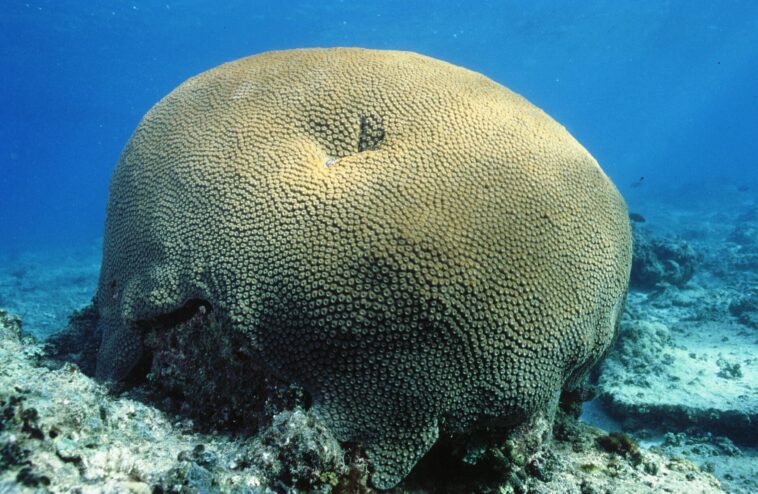Coral is essential to marine biodiversity. Despite their limited coverage of the oceans, coral reefs—often referred to as the tropical rainforests of the sea—house approximately 25% of marine species, providing crucial habitat and food sources. They also protect coastlines from erosion and storms. A new study published on August 14, 2024, in Science Advances reveals another vital function of corals. Since 1370, a coral in the Pacific has recorded the tumultuous history of this ocean, offering unprecedented insights into its temperature variations, which Australian and British researchers have analyzed.
Scientists are aware that the Pacific Ocean has experienced global warming over the centuries, with marine heatwaves and widespread coral bleaching in recent years due to anthropogenic climate change. However, it has also undergone significant variability with cooler or warmer years and even decades. Continuous records extending back several centuries are rare, necessitating this research.
To gather extensive data, an international team of Earth and climate scientists, co-led by the University of Leicester, sampled a massive Diploastrea heliopora coral, sometimes called honeycomb coral, by drilling up to two meters deep. This exceptionally old specimen (627 years), discovered in 1998, provides clear data on sea temperatures around Fiji from 1370 to 1997. It constitutes the oldest and most comprehensive continuous temperature record in the tropical ocean and offers key insights into long-term climatic and environmental changes that have shaped this slow-growing reef (3-6 mm per year).
In addition to these valuable natural archives, 26 years of instrumental data collected from this region, which plays a crucial role in regulating global climate patterns due to its association with long-term Pacific climate oscillations, including the well-known transition from El Niño to La Niña states every few years, are included. Studying the ocean temperature gradients highlighted by this study is crucial, as they can involve significant changes in precipitation and cyclone development. Obtaining such comprehensive context is vital for understanding current climate trends and predicting future climatic shifts.
As Jens Zinke, co-director of the study, professor of paleobiology at the School of Geography, Geology, and the Environment at the University of Leicester, and a Royal Society Wolfson Fellow, explains, “As corals grow, they record in their skeletons the chemical composition of the surrounding ocean day by day over centuries. These corals act as living temperature sensors by altering the strontium-to-calcium ratio in their skeletons, with lower ratios linked to higher temperatures.” Massive corals can thus contain centuries of historical data within their growth records or chemical composition.
The coral indicates a notable warm period between 1370 and 1553 when sea temperatures around Fiji were almost as high as today. This highlights the natural variability of the Pacific climate system. However, by combining coral samples with other paleo-oceanographic records across the Pacific for a broader view, researchers found that the recent century’s Pacific-wide warming, largely attributed to human-induced climate change, marks a significant deviation from the natural variability recorded in previous centuries.
“By comparing our reconstruction with instrumental data, we are uncovering unprecedented recent warming and highlighting the impacts of ongoing climate change on Pacific decadal climate dynamics. The study shows that current ocean heat around the Fijian archipelago is the highest in 653 years,” warns Jens Zinke. While some parts of the Pacific were previously warmer and others cooler over decades, this relationship is changing profoundly. Warming is becoming increasingly synchronized across the tropical and subtropical Pacific Ocean.
This implies that major disruptions are expected in precipitation cycles, as well as in droughts and floods, since rain is often generated by water vapor evaporating from warmer seas. Droughts are likely to become prolonged, and tropical cyclones may intensify, with significant consequences for millions of people. “Persistent synchronized warming rates in the western and central Pacific could harm ecosystems and Pacific island nations,” concludes the scientist.
Source: Sciencepost




